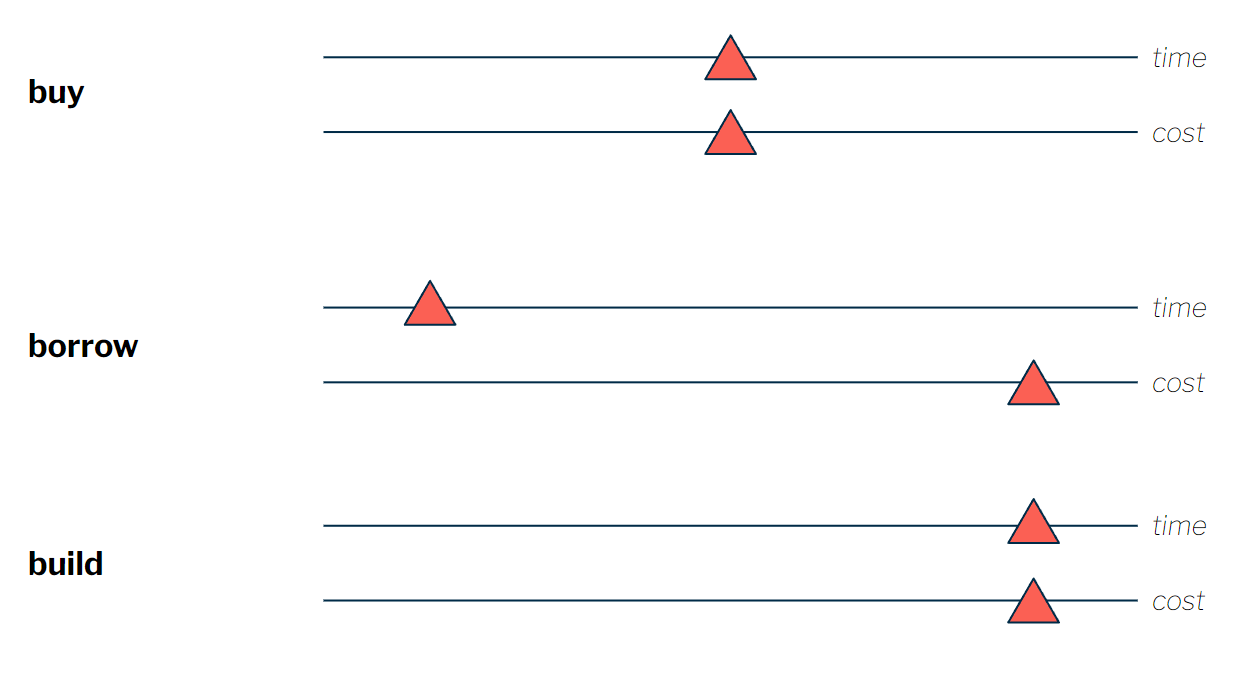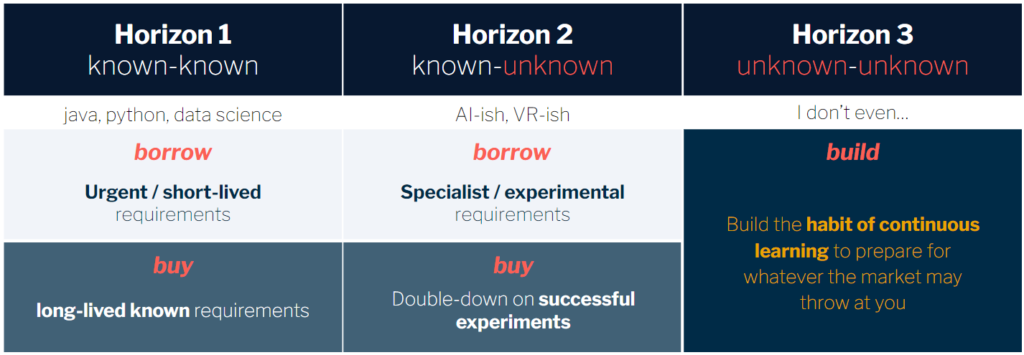The “build” lever blind spot
Your ability to deliver outcomes as a business depends on the capabilities you have in the organisation. While tools (like AI) and algorithms play a role, in the knowledge industry, your capabilities mainly come from the people you are able to deploy to solve a problem. Gaining access to the “right” people (talent) to achieve your outcomes is the essence of Talent Strategy.
There are 3 levers, you can use to get access to the “right” people.
- Buy (a.k.a. Hire)
- Borrow (a.k.a bringing in consultants / staff augmentation) and
- Build (a.k.a. learning / capability development)

For a long time, we’ve made the fallacy of thinking of these levers across only time and cost.
This is what the comparison looks like.
Needless to say, the “build” lever doesn’t get much love. But I think there’s a fatal flaw in this way of looking at talent strategy. That is to do with the time horizon across which you are making this decision.
There are 2 reasons why the build lever looks costly and time consuming.
1. Thinking only of “known” requirements
When you try to formulate a talent strategy, you are thinking of the capabilities you will require in horizons 1 & 2.
Horizon 1 capabilities are the ones regularly used in the organisation (Front end engineers, back-end engineers, QA, Product Owner, Data Engineer, etc).
Horizon 2 capabilities are the ones that you are experimenting with / which you think you might need in the future (GenAI, VR, Data Governance & Security, etc).

But what about the unknown-unknowns? Getting into a habit of continuous learning as an organisation as well as individuals is the only way you can build the muscle to tackle whatever the market throws at you.
2. Executing “Build” half-heartedly
Most organisations still view the “build” as a cost. In fact, it is quite often included in CTC as an employee benefit! This puts the onus on the individuals which leads to these organisations taking only half-hearted steps towards it.
- They buy licences from online learning sites like (pluralsight, udemy, etc) and expect it to take care of all the learning required.
- They expect the L&D teams to drive learning, where even technologists struggle to keep up!
- They expect people to learn the “hard way”, on the job, so that the real cost of learning remains hidden under productivity arguments
As technology leaders, there’s a need for us to prioritise the “build” lever, to think of it as an investment and then execute it with intention.
Subscribe to the Next Iteration Newsletter to get members only content and insights directly in your inbox!
